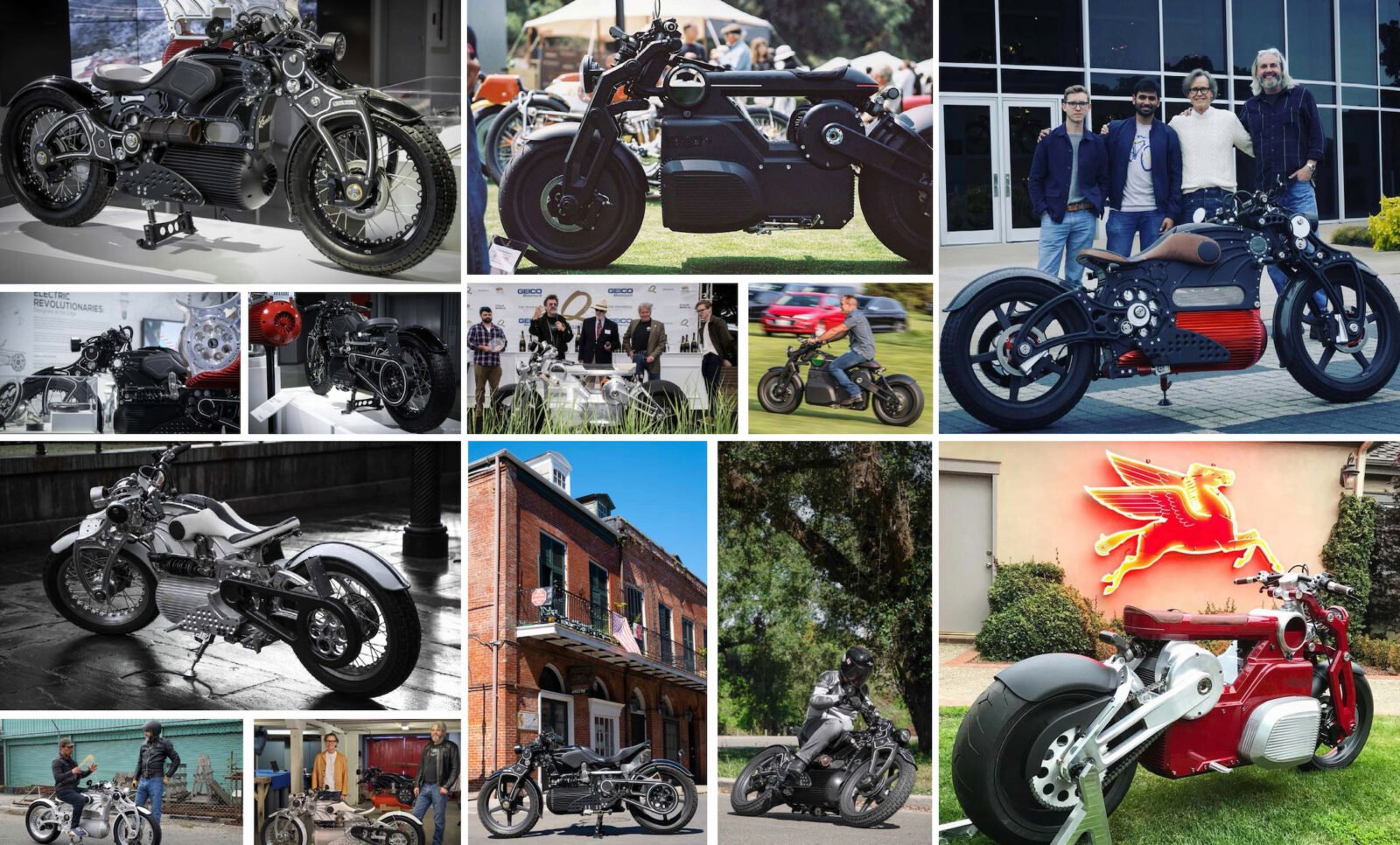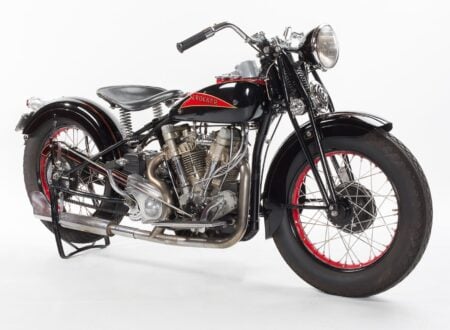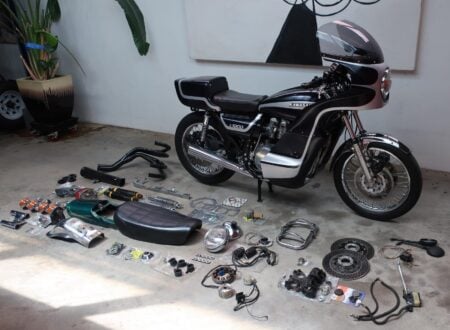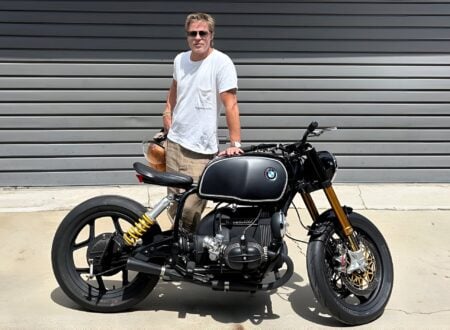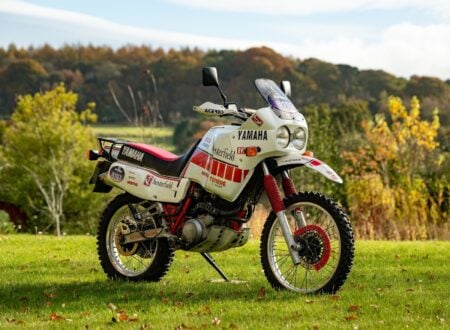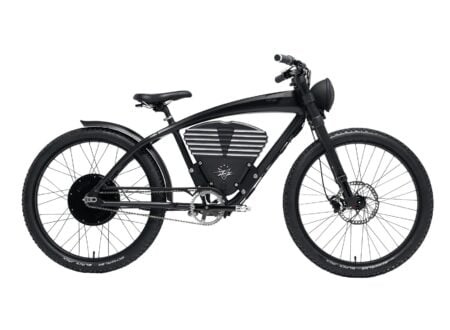The Curtiss Motorcycle Company is selling off their collection of pre-production prototypes in the build up to the full production run of their first fully electric motorcycle, named “The 1.”
Each prototype motorcycle comes with an allotment of shares in the company and a percentage of bonus shares, with one option being to buy the full collection of motorcycles and all the shares on offer for $3.3 million USD.
Fast Facts – The Curtiss Motorcycle Company
- The Curtiss Motorcycle Company is named for the early American motorcycle and aviation icon Glenn Curtiss. Curtiss developed a series of motorcycles of his own design starting in 1902, the most famous of which is the 4.4 liter V8-powered land speed racing bike which he rode to a new record of 136.36 mph (219.45 km/h) in 1907. A record that would not be beaten on a motorcycle until 23 years later in 1930.
- The modern Curtiss Motorcycle Company was founded in 2016 in Birmingham, Alabama by Matt Chambers and Jordan Cornille with the highly-regarded JT Nesbitt as their Head of Innovation and Design.
- This team had previously worked together at Confederate Motorcycles, a high-end motorcycle marque that produced a series of advanced V-twin American-made motorcycles out of New Orleans, Louisiana until Hurricane Katrina devastated the region. They later moved to Birmingham, Alabama.
- After spending a number of years in the development phase the company is now due to release their first all-electric motorcycle, known simply as “The 1.”
Curtiss: What’s In A Name?
Glenn Curtiss is one of the most influential early figures from both the world of motorcycles and aircraft. He began developing motorcycles powered by his own engines in 1902, and just five years later he would successfully claim the world land speed record, reaching 136.36 mph (219.45 km/h) on a 4.4 liter V8-powered motorcycle of his own design.
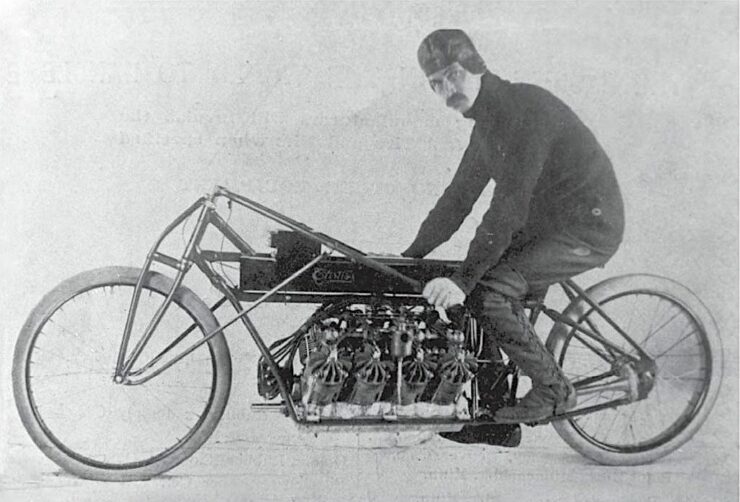

Remarkably Curtiss’ record would stand until 1911 when it was finally broken by an automobile, no motorcycle would be capable of matching his speed until 1930 – 27 years later.
In 1904 the Californian dirigible designer Tom Baldwin approached Glenn Curtiss seeking an engine. He figured that motorcycles and airships both needed lightweight engines and so he asked Curtiss for his help.
Baldwin ended up using a Curtiss 9 HP V-twin motorcycle engine and it powered his aircraft into the history books, becoming the first first (successful) dirigible in America. This success led to Alexander Graham Bell inviting Curtiss to develop an engine for a heavier-than-air, fixed-wing aircraft, which would shape the rest of his life.
Curtiss began designing aircraft with the Aerial Experiment Association (AEA) and by 1908 he had designed Aerodrome #3, better known as “June Bug,” which he then became the test pilot during its development program and completed most of the flights himself.
Later in 1908 Curtiss would pilot the June Bug on a 5,080 ft (1,550 m) flight, winning the Scientific American Trophy, and its $2,500 prize, and going down in history for performing the first pre-announced public flight of a heavier-than-air flying machine in the United States.
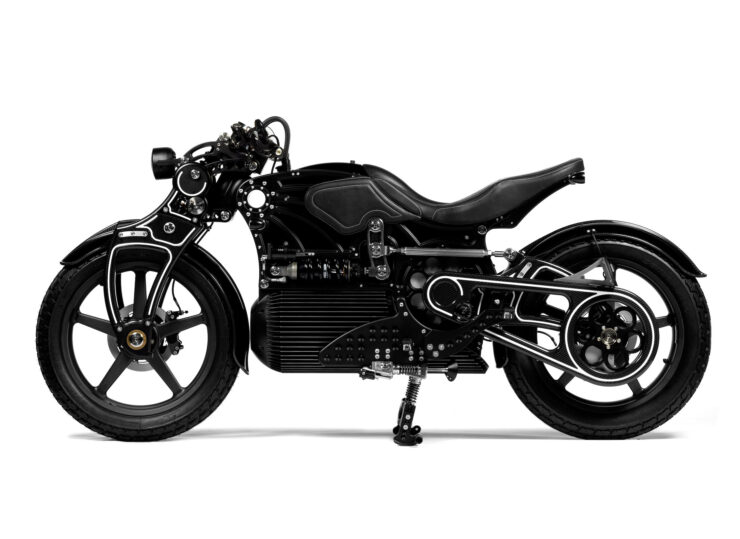

Though this raft of achievements was already extraordinary Curtiss went on to do a whole lot more in his life, you can read about it here on the official website that’s been set up in his memory.
The Curtiss Motorcycle Company
In 2016 in a workshop in Birmingham, Alabama plans were afoot to bring the name Curtiss back to the world of motorcycles. The plan from the outset was to create a new company that would focus on building well-engineered electric motorcycles that were designed to be upgradeable, so they could be considered heirlooms for lifelong ownership rather than disposable transportation appliances.
The company was founded by Matt Chambers and Jordan Cornille with the highly-regarded JT Nesbitt as their Head of Innovation and Design. Nesbitt developed a series of prototypes, experimenting with battery location and design, electric motor placement and design, and the overall architecture of the motorcycle including the chassis, suspension, and braking systems.
The final prototype would lead to the eventual production motorcycle design, now simply called “The 1,” and pre-orders are being taken now for delivery in December of 2023. The MSRP is $120,000 USD and The 1 will produce 82 kW (110 bhp) with up to 200 Nm (147.5 lb ft) of torque and a range of 120 miles (urban).
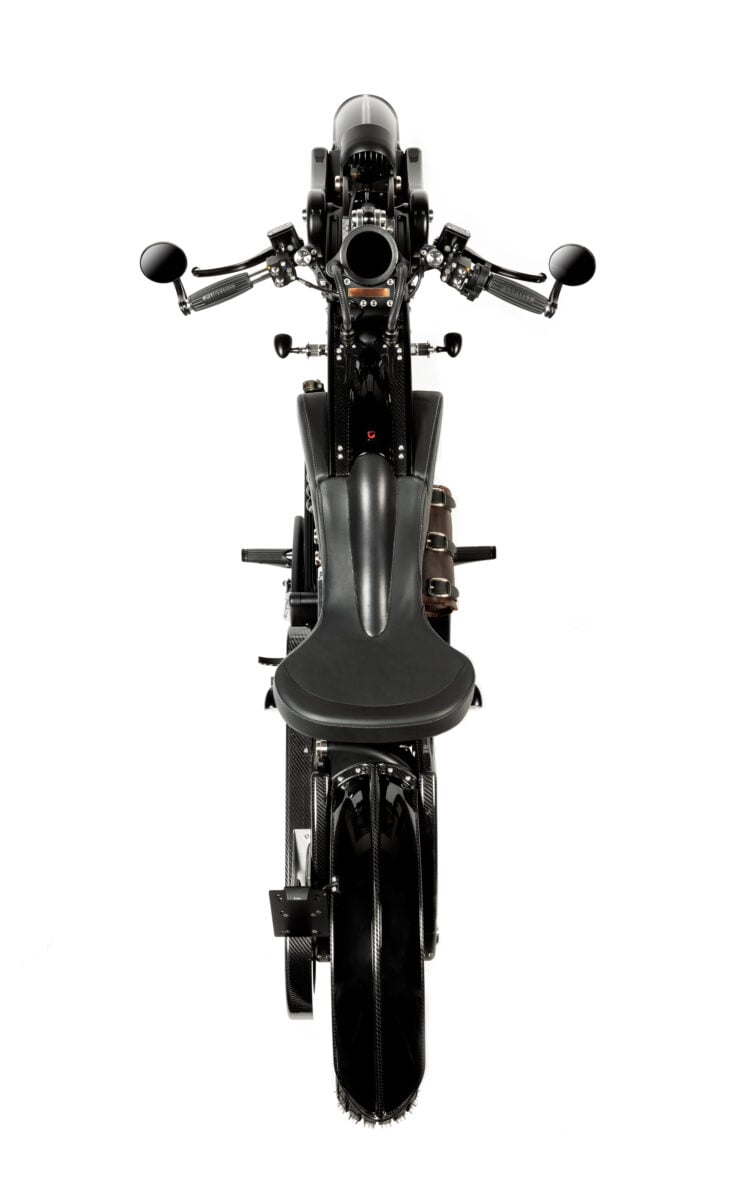

As process of mass-producing The 1 ramps up the company has decided to sell off many of the early pre-production prototypes consisting of seven motorcycles in total and reward buyers with shares in the company.
The Pre-Production Prototypes
Seven of The Curtiss Motorcycle Company pre-production prototypes are now being offered for public sale, as noted above the motorcycles and the associated shares in the company are available as a joint package for $3.3 million USD, or they can be bought individually.
We’ve included images and information about each of the seven motorcycles below, and if you’d like to contact the team at Curtiss to enquire about buying any of them you can visit the official invest page here.
2018 Zeus Concept Prototype #03
- Red. Non-Operational.
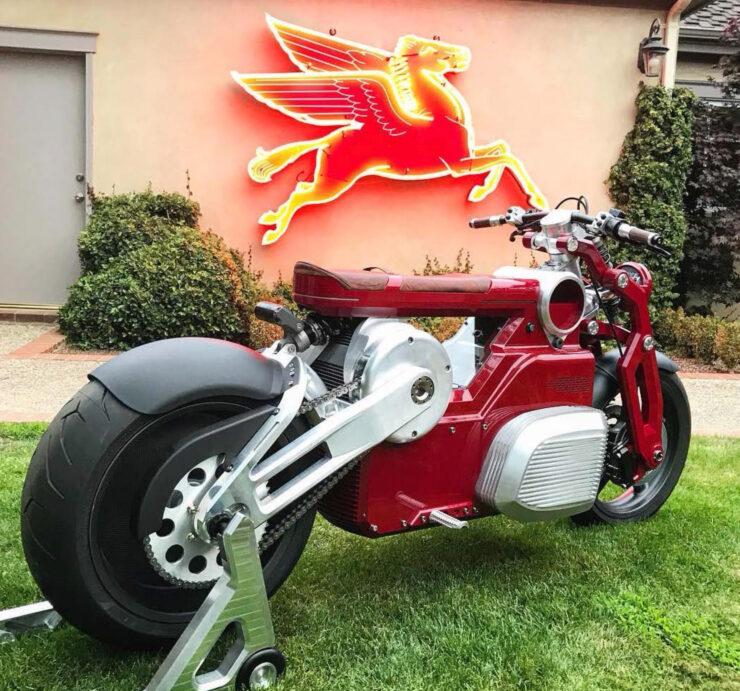

2018 Zeus Concept Prototype #01
- Black. Partially-Operational.
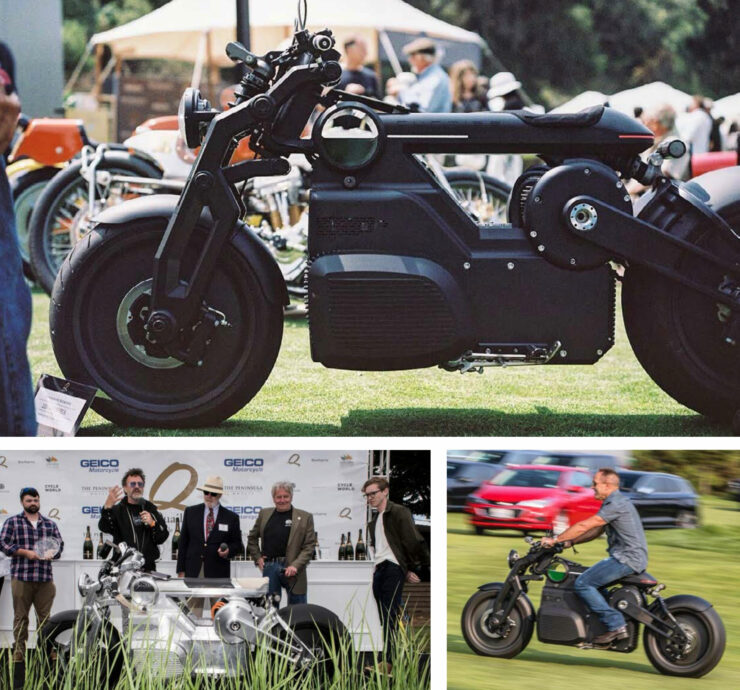

Curtiss 1 Alpha Prototype #03
- Blue/Black. Non-Operational.
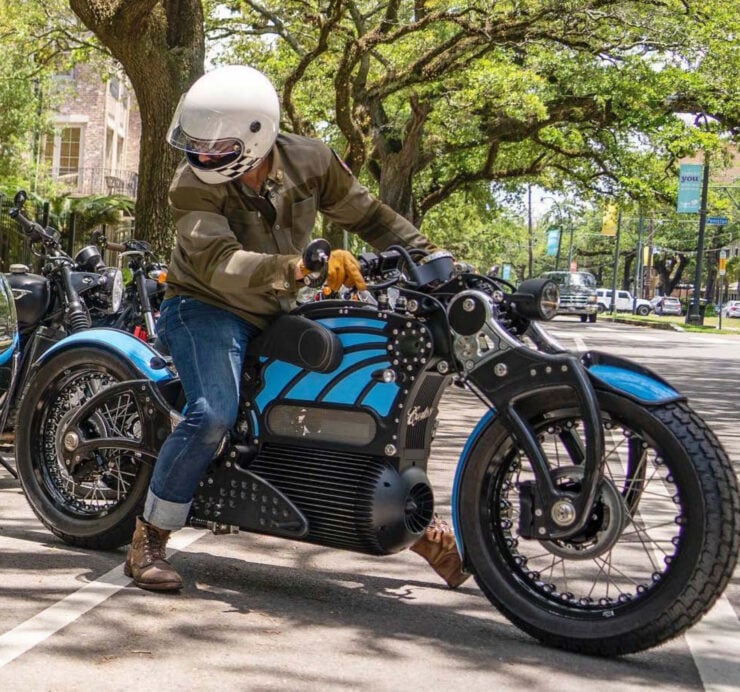

Curtiss 1 Alpha Prototype #02
- Red/Black. Operational.
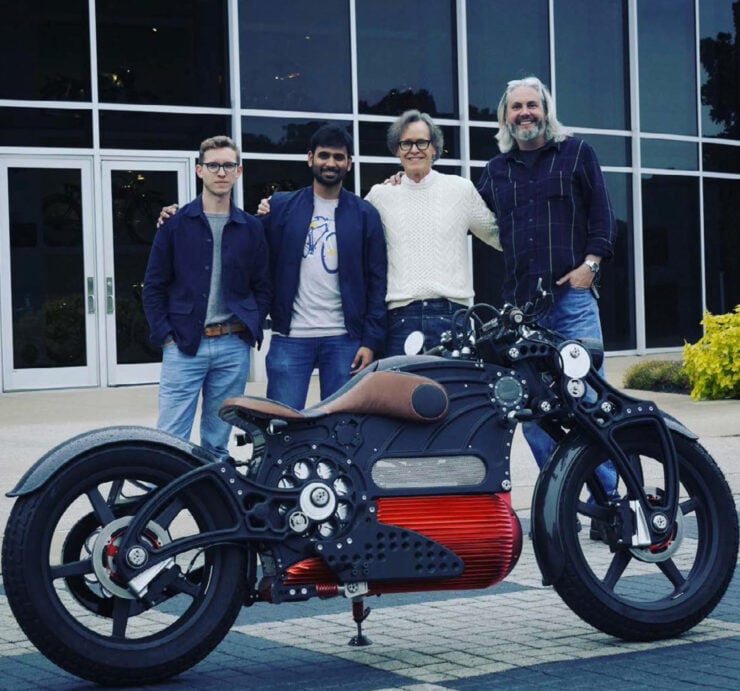

Curtiss 1 Alpha Prototype #01
- White/Raw. Operational.
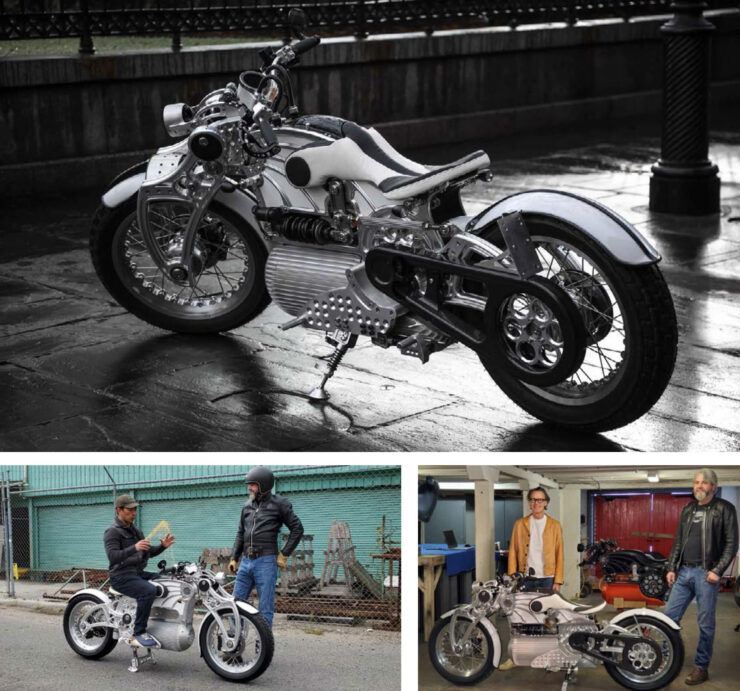

Curtiss 1 Pre-Production Prototype #01
- Black. Non-Operational.
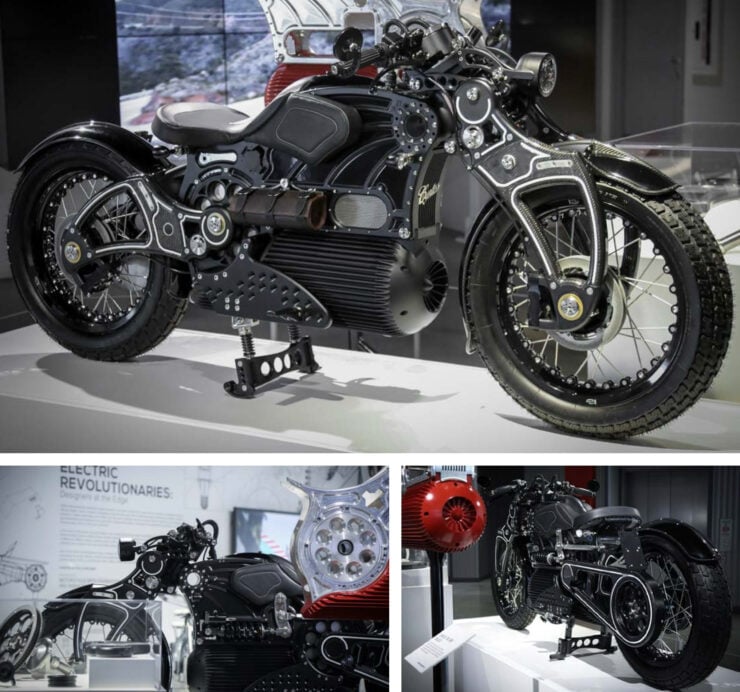

Curtiss 1 Beta Prototype #01
- Black. Operational.
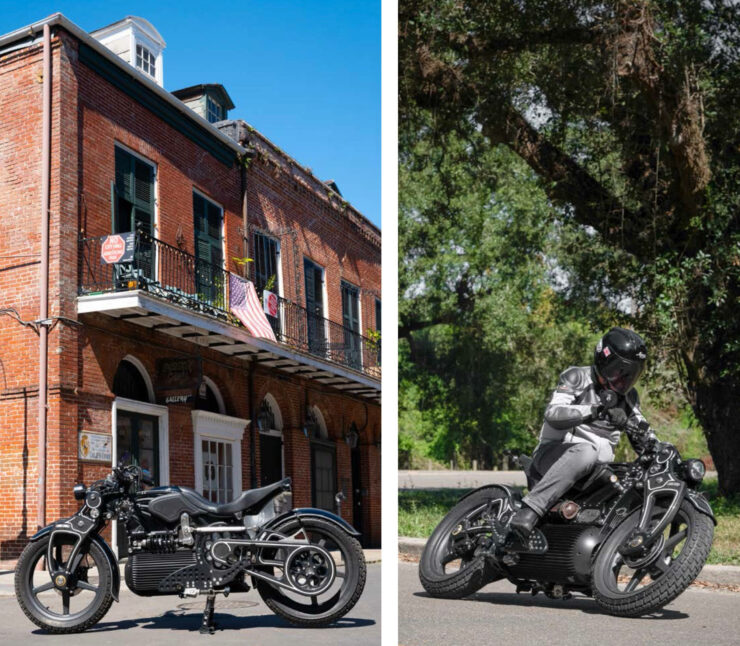

All images courtesy of The Curtiss Motorcycle Company – ©2023

